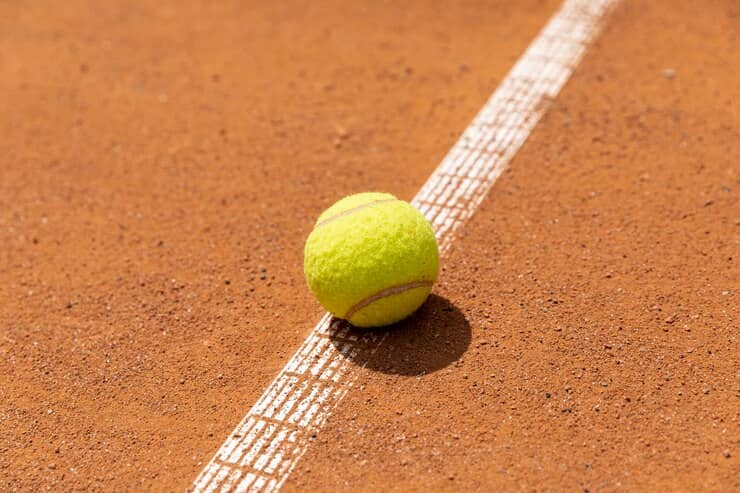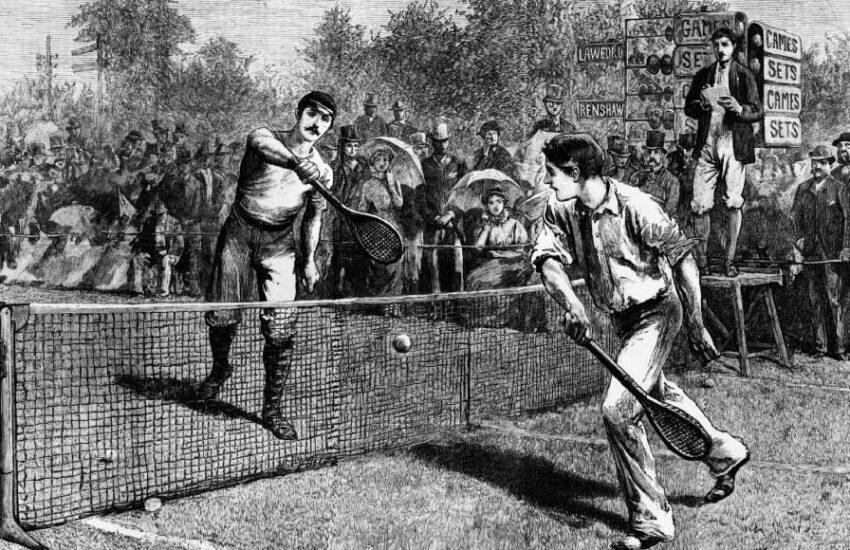Why Is There Fuzz on a Tennis Ball: the Unique Texture
Ever contemplated the peculiar fuzz coating on tennis balls? That seemingly decorative, yet purposeful, soft texture holds a vital secret behind the game’s dynamics.
The enigmatic fuzz on these balls isn’t merely for aesthetics—it shapes the trajectory, bounce, and control during gameplay. Let’s unravel the scientific rationale behind why there’s fuzz on a tennis ball and its profound influence on every serve and volley.
Composition of a Tennis Ball’s Fuzzy Texture
The unique fuzz adorning tennis balls isn’t a frivolous addition. Comprising various materials like plush fabric, fleece, and synthetic yarns such as mohair, this soft touch elevates the tactile appeal of the balls. The manufacturing process behind this distinct texture is as intricate as the game itself.
Manufacturing Process of the Furry Surface
Crafting the furry surface of a tennis ball involves a multi-step manufacturing procedure. Initially, rubber sheets undergo heating and molding into two semi-spheres, later bonded to create the core. However, the fuzz is where the process becomes fascinating.
Subsequently, the cores undergo immersion in adhesive glue before being rolled in bins containing vibrant yellow wool fibers. This meticulous coating results in the characteristic fuzzy exterior. A final heating process called vulcanization ensures firm attachment of these fibers, ensuring durability during intense gameplay.
Functional Role and Significance of Fuzz on Tennis Balls
Beyond its visual appeal, the fuzz plays a pivotal role in gameplay dynamics. When a player imparts spin to the ball, the fuzz functions as a grip, aiding in better control of direction and speed. Additionally, it alters the aerodynamics by introducing drag, slowing down the game’s pace for enhanced playability.
Moreover, the textured surface reacts uniquely to different court types, influencing the ball’s bounce. Whether on grass or clay, the fuzz dictates the ball’s behavior, impacting the strategic choices of players.
Grip Enhancement and Spin Control
The fuzz’s primary function lies in facilitating player control. As a player strikes the ball, imparting spin, the fuzz effectively grips onto the racket strings, allowing for precise manipulation of the ball’s trajectory. This increased control empowers players to add topspin, backspin, or sidespin with accuracy, ultimately influencing the ball’s flight path upon impact.
Airflow Alteration for Controlled Movement
Moreover, the fuzzy exterior significantly alters the ball’s interaction with the surrounding air during flight. This deliberate modification in airflow not only ensures controlled movement but also introduces a level of predictability to the ball’s trajectory. The induced drag due to the fuzz mitigates excessive speed, contributing to a more strategic and engaging game.
Adaptability to Court Surfaces
The adaptability of tennis balls to various court surfaces owes much to their fuzzy texture. When these fuzz-covered balls encounter grass, clay, or hard surfaces, the differential friction generated by the textured surface dictates the ball’s bounce characteristics. This inherent adaptability ensures that gameplay remains dynamic, offering unique challenges on different courts.
Discover the palette of tennis ball colors
Additional Insights into Tennis Ball Fuzz
Expanding on the manufacturing process, the materials used for creating the fuzz play a vital role in the ball’s overall performance. The fusion of the rubber core and the meticulously adhered fuzzy surface results in a durable, high-performance ball capable of withstanding rigorous gameplay.
Furthermore, the specific composition of the fuzzy exterior is engineered to strike a delicate balance between providing adequate grip and maintaining the ball’s integrity over extended use.
This balance is crucial to ensure optimal performance and consistency throughout matches, making tennis balls reliable companions in intense play sessions.
Conclusion
In essence, the seemingly inconsequential fuzz on tennis balls embodies a profound fusion of science, engineering, and functionality. Its role extends beyond aesthetics, encompassing pivotal functions that shape the very essence of the game.
Understanding the meticulous craftsmanship behind the creation of fuzzy tennis balls offers a newfound appreciation for their role in elevating the sport’s excitement and strategy.
So, the next time you witness those vibrant, fuzzy spheres zipping across the court, recognize that they aren’t just balls—they’re the product of precision engineering, designed to add depth and dynamism to every serve, volley, and rally.



